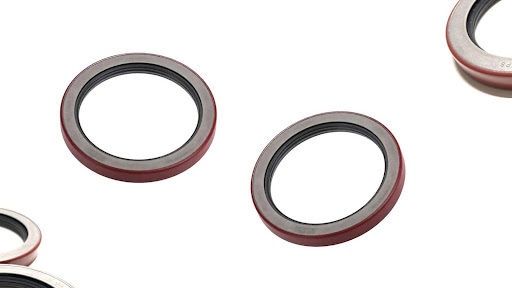You may not need to know much about oil seals, but there is a good chance the components in your car engine do. This blog explains the basics of oil seals and how they work.
What Are Oil Seals?
Oil seals are devices that are used to seal oil. They are typically made of metal and have a rubber or synthetic rubber sealing element. Oil seals are used in various applications, including automotive, aerospace, and industrial.
The primary function of an oil seal is to prevent the escape of lubricating oil from a bearing or other moving part. Oil seals also keep contaminants out of bearings and other sensitive components. In automotive applications, oil seals are found in the engine, transmission, and differentials. In aerospace applications, oil seals are found in hydraulic and pneumatic systems. Industrial applications for oil seals include pumps, compressors, and gearboxes.
Oil seals consist of three main elements: the body, the lip, and the spring. The body is typically made of metal and has a groove that houses the lip and spring. The lip is made of rubber or synthetic rubber and is what comes into contact with the shaft or housing to create the seal. The spring helps to keep the lip in contact with the shaft or housing.
The Basics of Oils Seals
Oil seals seal lubricating oils in engines, transmissions, and other mechanical systems. The oil seal has two main functions: to keep the oil in and the contaminants out. Many different types of oil seals are available on the market, but they all serve the same purpose.
The most common type of oil seal is the lip seal. Lip seals have a metal or plastic lip that presses against a mating surface to create a seal. This type of seal is commonly used in engine applications with high pressure and temperature. Another type of oil seal is the v-ring seal. V-ring seals have two lips that form a V-shape when installed. This type of seal is used in lower-pressure applications such as transmissions.
Oil seals are important to keep your engine and transmission running smoothly. Without them, your engine would be susceptible to contamination and leaks. If you notice an oil leak, it is important to have it repaired as soon as possible to avoid further damage to your engine.
How Does An Oil Seal Work?
Oil seals are used to keep oil in and contaminants out. They are found in various applications, such as automotive engines and transmissions, hydraulic cylinders, and pumps. Oil seals have two main functions: sealing and wiping. Sealing keeps lubricant in and keeps contaminants out. Wiping helps remove debris that may have gotten past the seal.
Oil seals work by being pressed against a surface by the pressure of the fluid they are sealing. This creates a tight seal to prevent leakage but still allows the fluid to move freely. The seal can also withstand many applications’ high temperatures and pressures.
Conclusion
If you’re looking for information about oil seals, check out Ariiz’s portfolio. They have a wide range of oil seals perfect for any application. From National Oil Seals to other top brands, Ariiz has the right oil seal for the job. With over years of experience in the industry, they’re sure to have the knowledge and expertise to help you find the perfect oil seal for your needs.


